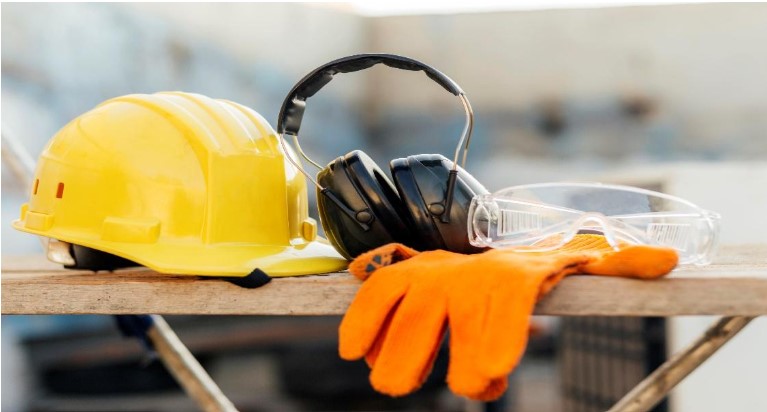Real-Life Lone Working Incidents Lessons Learned
Introduction
Behind every regulation and safety policy are real incidents that demonstrate the risks of lone working. Examining past events provides valuable lessons for organizations, helping prevent similar outcomes and highlighting areas where safety measures are insufficient. Lone workers, by definition, operate without direct supervision, making effective risk management, monitoring, and emergency preparedness essential.
Incident 1: Engineer Trapped in a Confined Space
Background:
A water utility engineer entered a remote pumping station alone to perform routine maintenance. During the task, a sudden structural collapse left him injured and unconscious.
What Went Wrong:
No check-in or communication system in place.
Confined space work was conducted without a permit.
Lack of pre-entry risk assessment and emergency planning.
Lessons Learned:
Always enforce permit-to-work systems for high-risk activities such as confined spaces.
Implement mandatory lone worker monitoring tools, including communication devices and location tracking.
Ensure lone workers have emergency equipment (e.g., harnesses, gas detectors) and clearly defined contact mechanisms.
Incident 2: Cleaner Assaulted During Late Shift
Background:
A female cleaner working alone in a retail store at night was attacked during her shift. No panic button, personal safety device, or supervision system was available.
What Went Wrong:
Lack of risk assessment for evening or night shifts.
No training on dealing with aggression or emergency response procedures.
Absence of personal protective tools or alarm systems.
Lessons Learned:
Conduct violence and harassment risk assessments for all lone work scenarios.
Provide panic alarms, mobile lone worker apps, or wearable devices.
Offer training in conflict resolution, situational awareness, and emergency response.
Incident 3: Security Guard Dies of Medical Emergency
Background:
A night-shift security guard suffered a heart attack while patrolling a large industrial site. He was discovered several hours later due to the absence of a monitoring system.
What Went Wrong:
No regular check-in or emergency escalation procedure.
Lack of access to first aid equipment or automated defibrillators (AEDs).
No health monitoring or medical screening for high-risk lone workers.
Lessons Learned:
Implement hourly check-in systems or real-time monitoring apps.
Install first aid stations and AEDs, and train staff in basic life support.
Provide health monitoring support for lone workers, particularly those in high-risk roles.
Key Hazards in Lone Working
Lone workers face multiple hazards that must be identified and mitigated:
Physical hazards – slips, trips, machinery, confined spaces, or hazardous equipment.
Environmental risks – remote locations, extreme weather, or poor lighting.
Personal safety risks – aggression, assault, or medical emergencies.
Mental health concerns – stress, anxiety, and isolation due to working alone.
Step 3: Develop a Lone Worker Safety Policy
A formal Lone Worker Policy provides a structured framework for all employees. Key elements include:
Definition and examples of lone working.
Roles and responsibilities of managers, supervisors, and workers.
Communication protocols and regular check-ins.
Emergency response procedures for different scenarios.
Training and ongoing monitoring systems.
Disciplinary procedures for non-compliance.
Step 4: Establish Monitoring and Supervision Methods
Regular supervision and monitoring are crucial to prevent incidents and ensure rapid response. Effective methods include:
Scheduled phone or video calls to check on worker wellbeing.
Automated check-in apps that notify supervisors if workers fail to respond.
Man-down detection alarms that alert emergency contacts if the worker is incapacitated.
Real-time tracking dashboards for supervisors to monitor locations and activity.
Step 5: Create an Emergency Response Plan
Lone workers must know exactly what to do in case of an emergency. Your plan should include:
Step-by-step instructions for various scenarios (medical, physical, environmental).
Contact information of supervisors, emergency services, and colleagues.
Clearly defined escalation procedures for delayed check-ins or emergencies.
Roles of colleagues in responding to alerts and facilitating rapid intervention.
Step 6: Provide Training and Support
Conduct initial and refresher training on hazard awareness, emergency response, and use of communication devices.
Train supervisors to identify signs of distress or fatigue in lone workers.
Offer access to counseling, employee assistance programs (EAPs), or mental health support to maintain psychological wellbeing.
Step 7: Monitor, Audit, and Improve
Safety programs should continuously evolve to remain effective. Collect and analyze:
Incidents, near misses, and hazard reports.
Feedback from lone workers on tools, procedures, and risks.
Failures or limitations in devices and monitoring systems.
Health and wellbeing indicators for employees in isolated roles.
Conduct regular audits, review policies, and update procedures based on findings to ensure continuous improvement.
Conclusion
Implementing a lone worker safety program is not a one-time task—it is a continuous commitment to health, safety, and wellbeing. By establishing clear policies, using monitoring tools, providing training, and fostering a culture of safety, organizations can significantly reduce risks and create an environment where no worker is truly alone.
A robust program protects employees physically and psychologically, enhances organizational compliance, and promotes a culture of vigilance, accountability, and care. In essence, a well-managed lone worker safety program is both a moral obligation and a strategic investment in workforce resilience.


